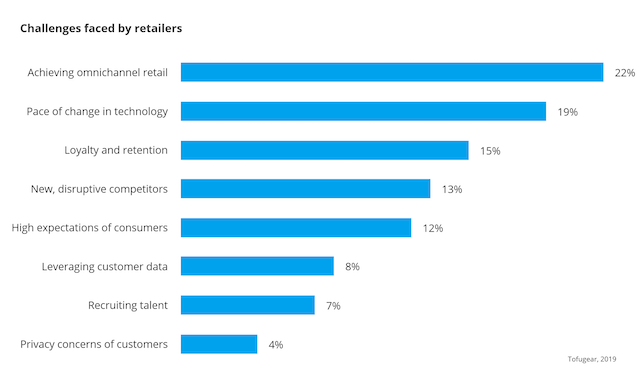There is currently an almost endless array of technologies and innovations that Asian retailers can invest in as they look to future-proof their business and meet the expectations of the next generation of customers.
But when Tofugear surveyed retail executives across Asia as part of its 2019 Asia Digital Transformation Report, it was striking to see that the biggest technology investment priority for retailers was actually e-commerce platforms.
One in two respondents (53 per cent) indicated that they will invest in their e-commerce platform over the next 12 months, while a further 20 per cent stated they would do so over the next two to four years. Contrast that to the 2018 edition of the survey, when just one in four respondents said that they intended to invest in their e-commerce platform over the ensuing year. Last year, business intelligence and data analytics were the most pressing investment areas.

In today’s omnichannel age, it may seem odd for Asian retailers to still invest so heavily in their e-commerce platforms. After all, many retail businesses have already had their online stores in place for some time now. However, here are three reasons why e-commerce is being placed at the top of retailers’ ‘to do list’:
Competition from e-commerce giants
Tofugear’s digital transformation survey included responses from retailers based in countries such as the Philippines and Malaysia, where marketplaces such as Lazada and Shopee are dominating the online retail scene. With these marketplaces offering sophisticated personalisation and often a wide range of fulfilment services, local retailers have had to invest in their own e-commerce storefronts as they mount a fightback.
The omnichannel challenge
When retailers were asked what they thought was the single-biggest challenge they are currently facing, one in five mentioned the ability to achieve omnichannel retailing. Consumer expectations have increased dramatically over recent years and shoppers need e-commerce sites to offer functionality such as being able to check stock in specific stores or arranging click-and-collect in any location they prefer.

At the same time, retailers are also looking to use their stores as local fulfilment hubs for online orders. To do so, retailers need to have a single view of inventory and use a distributed order management system. As part of this investment, retailers are making the necessary upgrades to their websites to accommodate such an omnichannel approach.
Taking account of emerging technologies

There was a surge in investment in e-commerce platforms just over five years ago – when many retailers transitioned to mobile optimised sites – but technology and consumer demands have continued to evolve since then. An increasing number of retailers are now turning to emerging technologies such as artificial intelligence to upgrade the customer experience on their e-commerce platforms.
For instance, visual-search technology is a seamless way for customers to get the appropriate search results based on images of a product they are looking for. AI-driven chatbots and the ability to offer voice assisted ordering through smart speakers such as Google Home are also being considered by retailers.
This feature originally appeared in the Inside Retail Asia’s magazine edition, available by subscription in digital or print versions.






